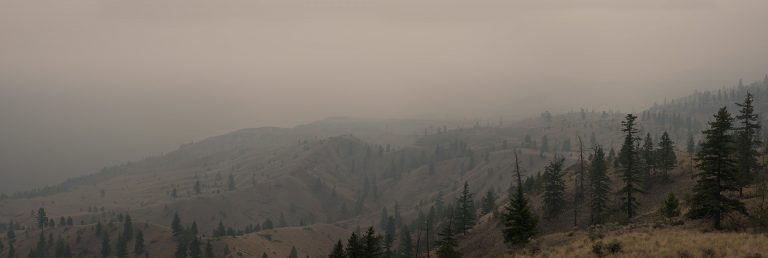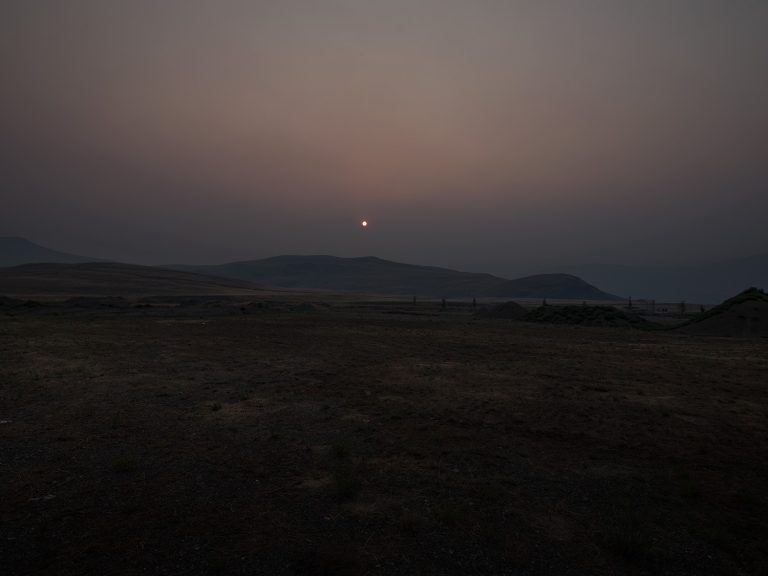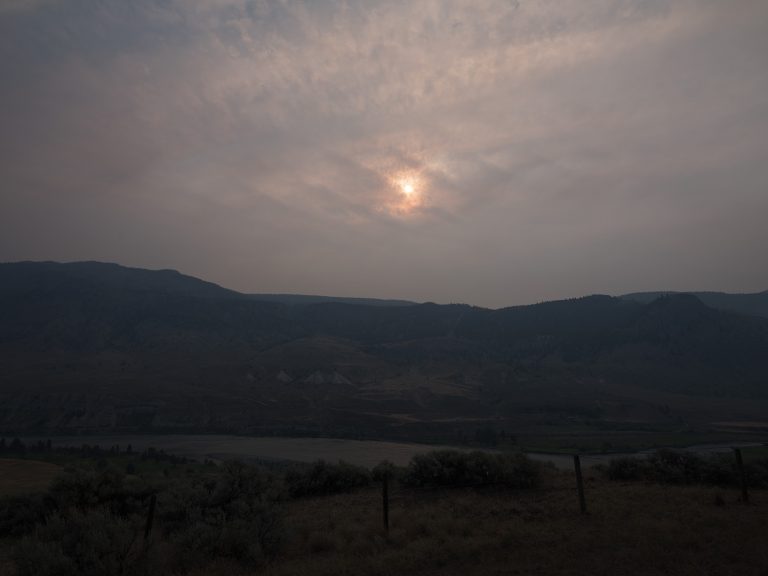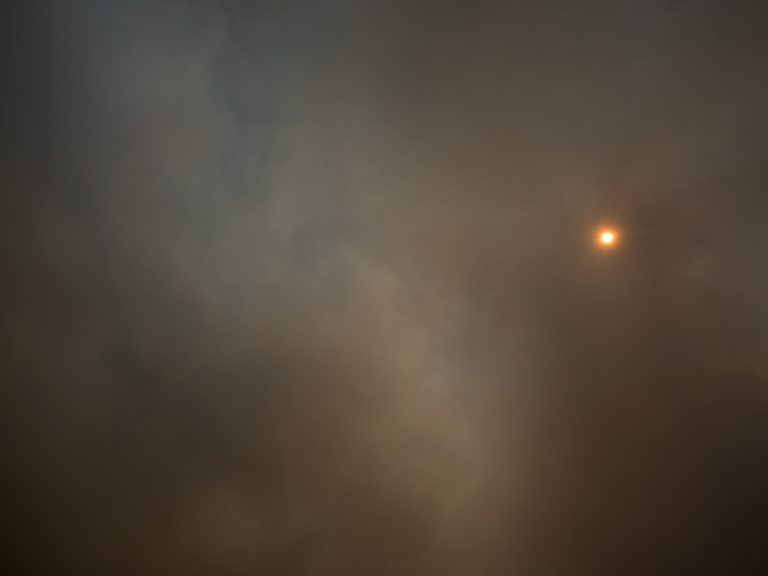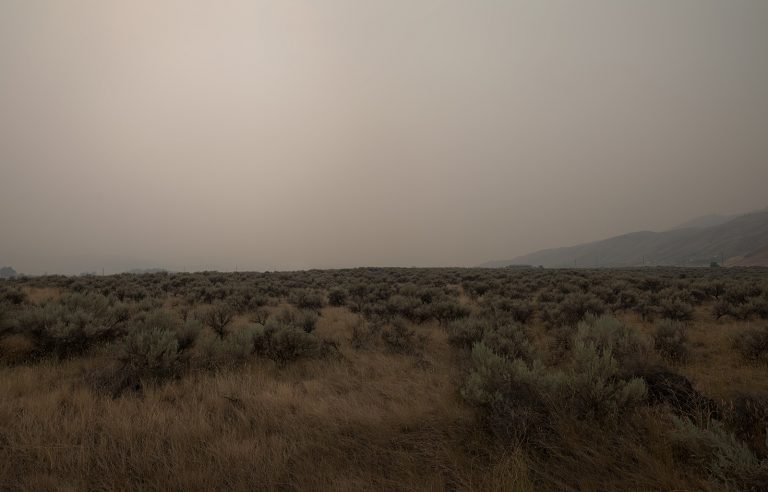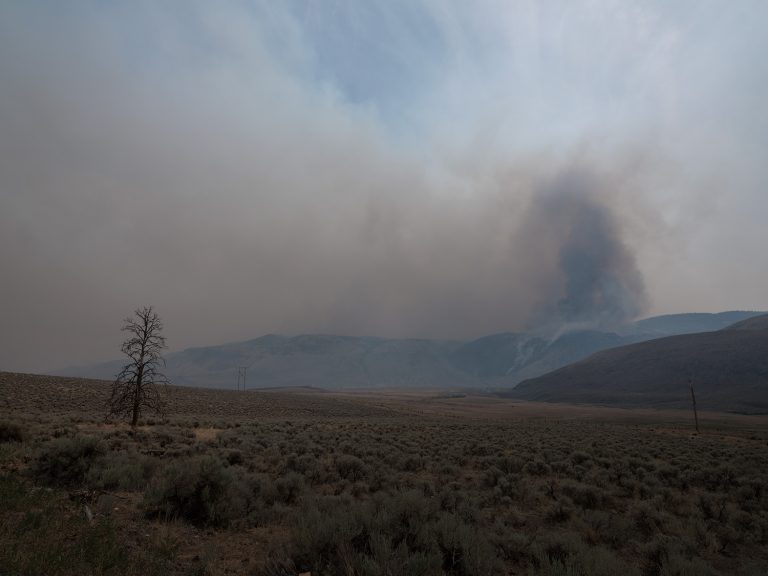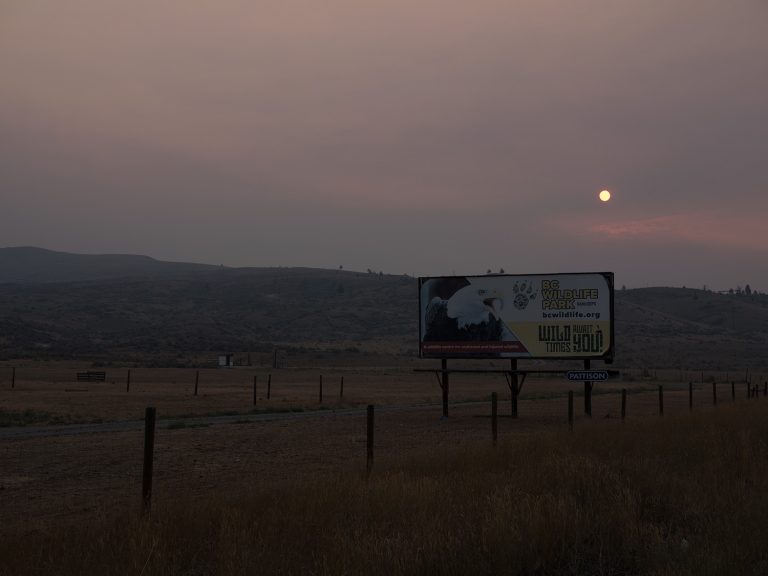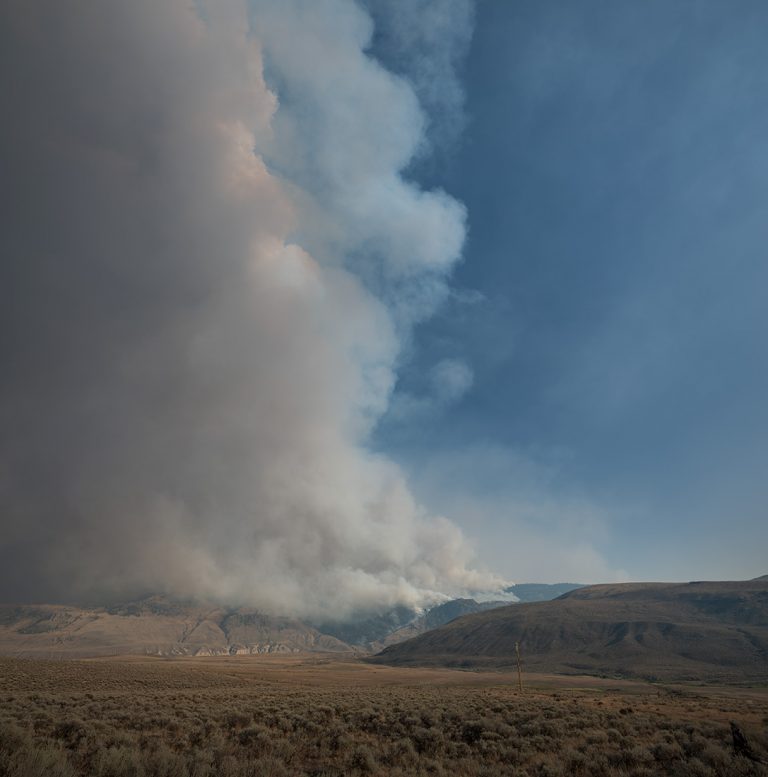Wild Times
2021
During the summer of 2021, British Columbia saw the effects of a heat wave and an extreme drought that led to numerous forest fires. The town of Lytton was decimated and a number of others were on high alert. I travelled to the Thompson River Valley to photograph the rapidly expanding fires. The vegetation was completely parched and the tiniest twigs turned to dust under my feet. For miles around, you could see plumes of smoke belching fire. The sky was dark, cloaked by airborne particulate matter, and you could no longer tell day from night. Behind these toxic clouds, the rising sun looked like a blood moon. This hellish landscape was both captivating and unsettling; as a friend wrote to me later, “how is it that such fires can seem so beautiful?” I stopped by the side of the Trans-Canada Highway to take a picture of a tourist poster for the British Columbia Wildlife Park : “Wild Times Await You!” it announced. The smoke had become so thick that you could barely make out what was around you, and the air in the vicinity was unbreathable. The tiny community of nearby Walhachin would be evacuated the next day.
Although forest fires are relatively common in the western regions of Canada and the United States, the situation has greatly deteriorated in recent years and many communities in California, Oregon and Canada have been hit hard. We know that climate variability and drought create conditions conducive to forest fires, but are they solely responsible for such disasters? Logging companies replant mainly with conifers, which burn easily, and overly homogeneous replanting fuels fires. Some researchers1 feel that we need to rethink our models of forest fire management. In their view, systematically extinguishing forest fires interferes with the natural phenomenon of wildfires and leads to a build-up of flammable matter. It makes more sense, they feel, to clear small areas by means of controlled burning. This technique is based on an ancestral practice of the Indigenous peoples,2 who adapted the structure of their lands to protect them from devastating fires. The First Peoples of America and Australia3, who understood that forest fires were an integral part of the cycle of forest renewal, practised “cultural burning.” By fighting against the natural elements and overexploiting the forests, we have upset a centuries-old balance. Trying to master Nature without understanding or respecting it will never work. We need to rethink our relationship with the land and learn to co-exist with it, instead of giving way to the illusory quest for an increasingly controlled and safe world.
This project comprises some twenty large photographs and is an extension of the photo series Land of Ashes, which I made in a burned-out patch of boreal forest north of Lac St-Jean, Québec, in the summer of 2020.


